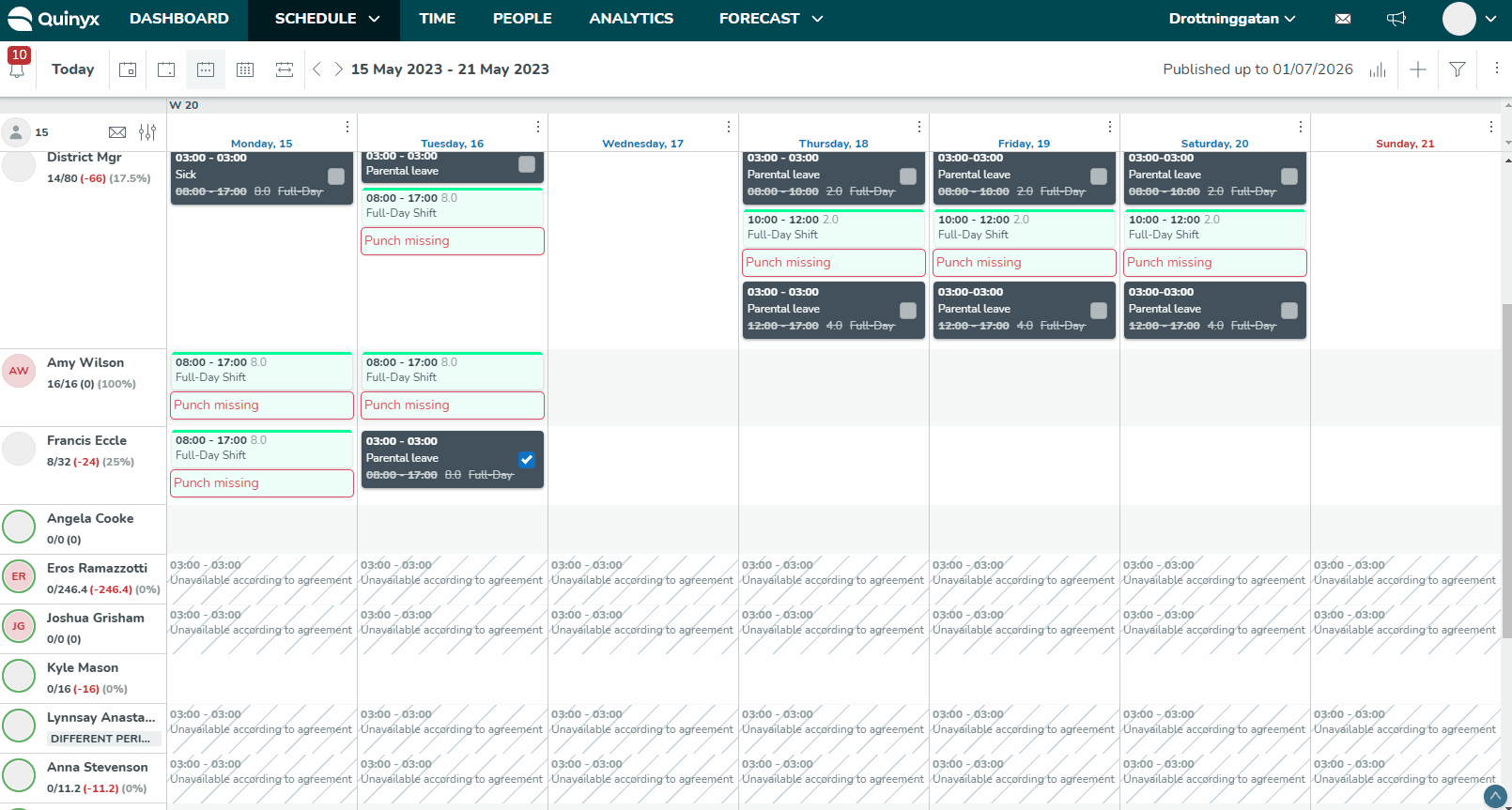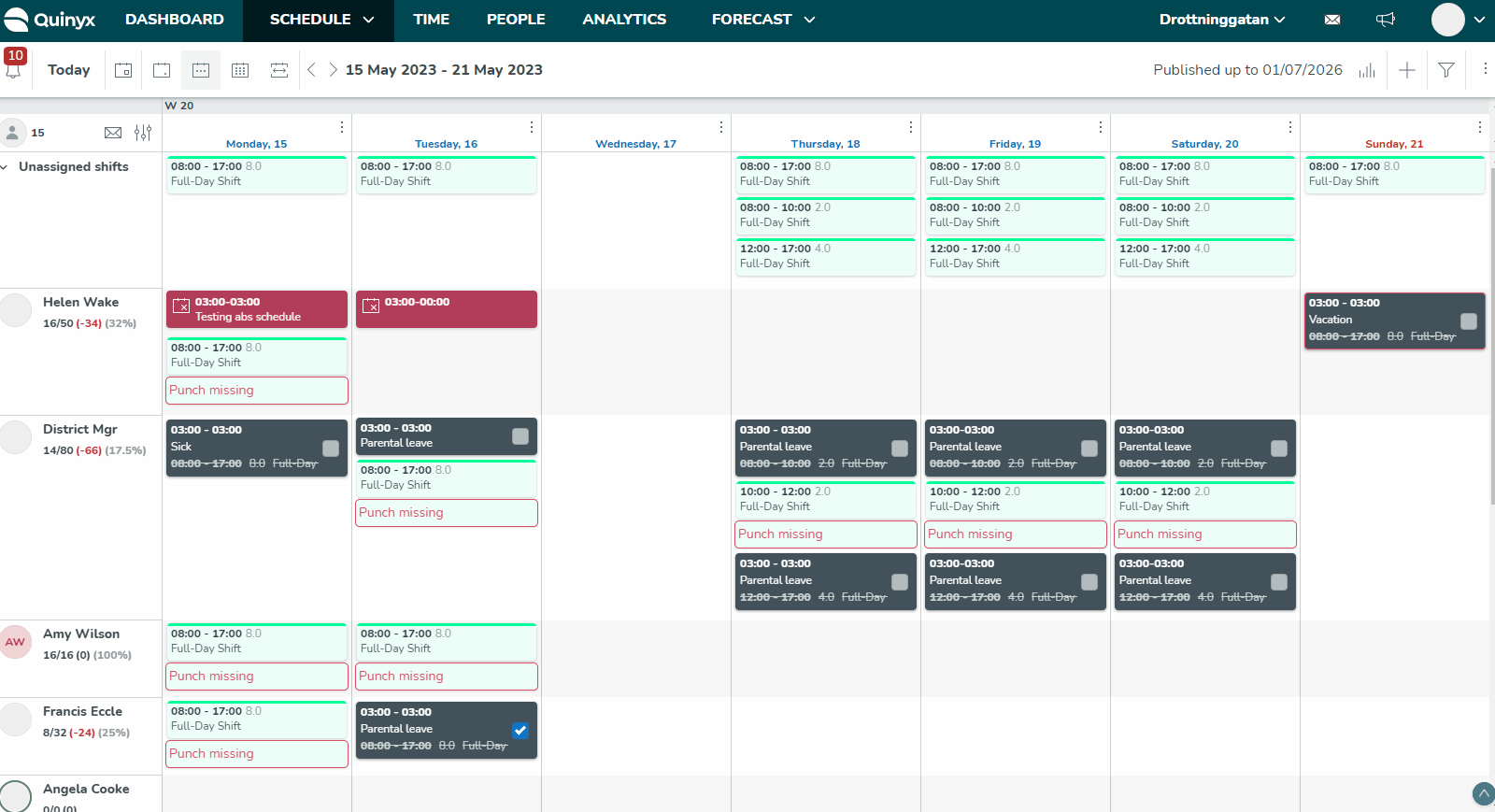Employee agreements
List of people
You can see information about employee agreements in Quinyx. To do this, click on People.

The view displays the following information:
- Employee name
- Badge number
- Contact information (email/telephone number)
- Agreement name
- Skills
- Unit & Section
- Roles
The default number of employees you can view on one page is 10. When there are more than 10 employees, use the < > keys to navigate between the pages.

Agreement tab in the employee details panel
You can add a new agreement and see more detailed information about the different agreements connected to the employee. You can do this inside the Agreements tab that is located to the right of Employee details in the Edit employee side panel. To add a new agreement, click Add new agreement, insert the correct information, and click Save. You can also view the current agreement of the selected employee in this tab. The information listed below is available in the tab and, if the Use template checkbox is unticked, you can also edit that information.

Add the following information to the employee's agreement:
- Agreement
- Main agreement
- If there are multiple agreements, the main agreement is displayed first followed by the other agreements based on their created dates.
- Agreement details
- Select agreement template
- Unit
- Agreement name
- From and to date
- Expires (you can set an agreement expiration date in the future)
- Salary
- Use template
- Salaries / Current
- Monthly
- Hourly
- Custom divisor
- Employment rate
- Use template
- Advanced setting categories
- Balance Period
- Schedule period and working hours
- Rules for working time
- Break rules and schedule changes
- Break calculation rules
- Salary adjustments
- Social costs
- Additional fields
- Monthly nominal hours per year
- Time
- Availability
- E-signing
- Mobile punch flow
Agreement selection logic and agreement validity changes
Salary
The Salary section displays the employee's current, future, and previous salaries and their respective from dates. You can also see if the employee is employed by the hour or if they have a monthly salary. If the employee has a monthly salary, you can also see the custom divisor. This divisor is where the no. of monthly working hours is entered. The monthly salary is then divided by this divisor to calculate the hourly salary shown. If the Use template checkbox is unticked, you will see an additional section called Agreement template values, where you can see salary information as defined in the agreement template (for comparison purposes).
Employment rate
The Employment rate section displays the person's current, future, and previous employment rates and their respective from dates. If the Use template checkbox is unticked, you will see an additional section called Agreement template values which shows employment rate information as defined in the agreement template for comparison purposes.


